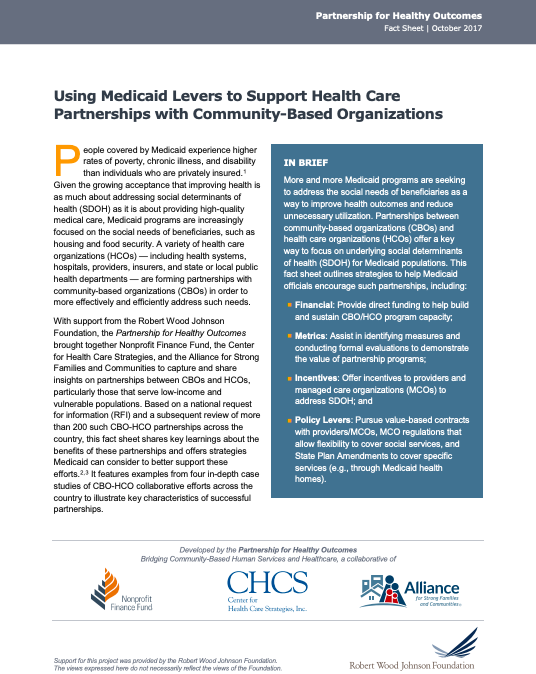
Using Medicaid Levers to Support Health Care Partnerships With Community-Based Organizations
This fact sheet outlines strategies to help state Medicaid officials encourage partnerships between community-based organizations (CBOs) and health care organizations. It features examples from four in-depth case studies of collaborative efforts across the country to illustrate key characteristics of successful partnerships.
More and more Medicaid programs are seeking to address the social needs of beneficiaries as a way to improve health outcomes and reduce unnecessary utilization. Partnerships between CBOs and health care organizations offer a key way to focus on underlying social determinants of health for Medicaid populations.
This fact sheet details:
- Financial: Provide direct funding to help build and sustain CBO/HCO program capacity
- Metrics: Assist in identifying measures and conducting formal evaluations to demonstrate the value of partnership programs
- Incentives: Offer incentives to providers and managed care organizations (MCOs) to address social determinants of health
- Policy Levers: Pursue value-based contracts with providers/MCOs, MCO regulations that allow flexibility to cover social services, and State Plan Amendments to cover specific services (e.g., through Medicaid health homes)
With support from the Robert Wood Johnson Foundation, the Partnership for Healthy Outcomes brought together Nonprofit Finance Fund, the Center for Health Care Strategies, and the Alliance for Strong Families and Communities to capture and share insights for partnerships between health care organizations and CBOs, particularly those that serve low-income and/or vulnerable populations.

 Back to Resources
Back to Resources